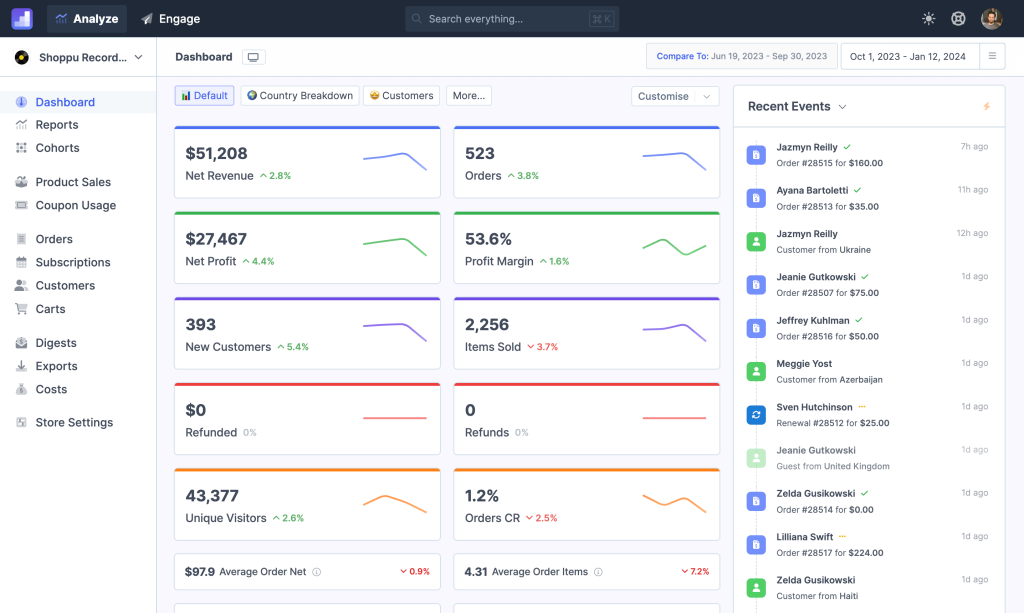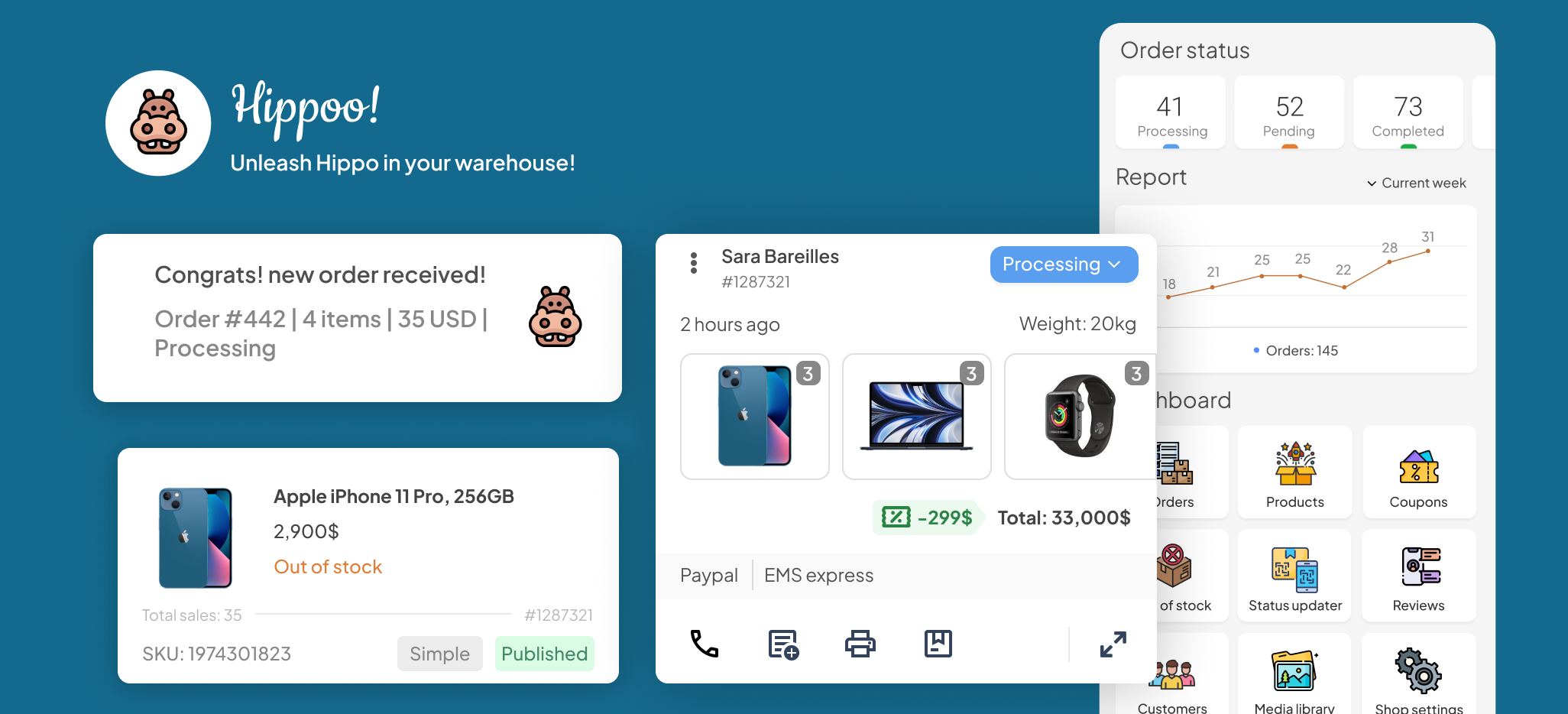Tracking customer behavior is critical for any WooCommerce store owner aiming to grow sales and improve user experience. Google Analytics is often the go-to tool, but it’s not the only option — and some store owners prefer to avoid it due to privacy concerns, data complexity, or simply wanting a more WooCommerce-focused solution.
Fortunately, there are multiple effective ways and tools to track your WooCommerce customer behavior without relying on Google Analytics. In this article, I’ll walk you through native options, third-party tools, and best practices to gain actionable insights about your customers.
1. Leverage WooCommerce’s Built-In Reporting Features
WooCommerce itself comes with basic but useful reports that provide insights into your store’s performance and customer behavior:
- Sales reports show revenue trends by day, month, and year.
- Product reports reveal best-selling products and categories.
- Customer reports provide information about top spenders and customer purchase history.
You can access these reports inside your WordPress admin panel under WooCommerce > Reports or WooCommerce > Analytics (for newer versions).
While these reports don’t provide session-level details, they offer a solid overview of customer buying patterns directly tied to your store data — no external tracking needed.
2. Use Dedicated WooCommerce Analytics Plugins

To get richer customer insights without Google Analytics, consider these WooCommerce analytics plugins designed specifically for e-commerce data:
- Metorik
Metorik is a popular analytics platform built specifically for WooCommerce stores. It syncs directly with your store database and offers detailed reports on customer lifetime value, repeat purchase rates, churn, and product performance — all without needing Google Analytics. It also supports segmentation, email reports, and funnel tracking. - WooCommerce Customer History
This plugin records detailed session histories of your customers, including pages viewed, time spent, and shopping cart activity. It helps you understand exactly how individual customers interact with your store and where they may drop off before purchase. - Advanced WooCommerce Reporting
This plugin enhances WooCommerce’s reporting with customizable charts, tables, and export options. It includes customer-focused data like purchase frequency, average order value, and customer retention.
3. Analyze User Interaction with Heatmaps and Session Replay Tools

Understanding where users click, scroll, and hesitate can give you a deeper understanding of their behavior. Consider these options:
- Hotjar
Hotjar offers heatmaps and session recordings that visualize how users engage with your store pages. It also includes polls and feedback widgets to capture user opinions. For privacy, Hotjar allows you to anonymize data and disable tracking on sensitive pages. - Mouseflow
Similar to Hotjar, Mouseflow tracks mouse movements, clicks, and scroll behavior. It provides funnel analytics and form analytics to identify where users abandon checkout or registration forms. - Matomo Analytics
If you prefer a self-hosted and privacy-focused solution, Matomo can be installed on your own server. It offers heatmaps, session recordings, and detailed visitor analytics without sending data to third parties.
4. Use Privacy-Friendly Traffic and Behavior Analytics
If you want simple, privacy-friendly alternatives to Google Analytics for visitor tracking, these tools are worth exploring:
- Plausible Analytics
Plausible is a lightweight, open-source web analytics platform that respects user privacy by not using cookies or collecting personal data. It gives you essential metrics like page views, bounce rates, and referrers. - Fathom Analytics
Fathom offers clean, easy-to-read reports with a focus on privacy compliance. It tracks visits and conversions without compromising user anonymity. - Simple Analytics
This tool provides straightforward website statistics and customer insights without complex setups or cookies.
All three tools can be integrated with WooCommerce stores to track visitor traffic and user journeys in a privacy-conscious way.
5. Collect Customer Feedback and Reviews

Sometimes, direct user input can be more valuable than numbers alone. WooCommerce stores should:
- Enable product reviews to learn which items customers love or dislike.
- Use survey tools like WPForms or SurveyMonkey to gather customer opinions post-purchase.
- Add feedback widgets like Feedback Company or Trustpilot to collect and showcase reviews.
Understanding customers’ subjective experiences helps complement behavioral data and guides better decisions.
6. Utilize Hosting Provider Analytics and Server Logs
Many web hosting providers offer built-in visitor analytics tools accessible from your hosting control panel, such as:
- AWStats
- Webalizer
These tools analyze server logs to give you visitor counts, popular pages, and traffic sources. Though more basic than Google Analytics, they require no JavaScript and keep data fully under your control.
7. Integrate CRM and Email Marketing Platforms

If you collect emails, connecting your WooCommerce store to a CRM or email marketing service can yield detailed insights about customer behavior outside the store:
- Mailchimp
Tracks email opens, clicks, and purchase behavior linked to campaigns. - ActiveCampaign
Provides customer segmentation and automation based on purchase history and engagement. - HubSpot CRM
Offers detailed customer journey tracking including emails, website visits, and sales.
By analyzing email engagement alongside on-site behavior, you get a holistic view of your customers.
8. Use WooCommerce Order and Customer Export Tools
Export your WooCommerce order and customer data into CSV or Excel files for offline analysis:
- WooCommerce Customer / Order CSV Export
Lets you export detailed reports of orders, customers, and products. - Advanced Order Export For WooCommerce
Supports filtering by date, product, status, and customer data for customized exports.
With exported data, you can analyze purchase trends, customer demographics, and buying cycles in Excel or data visualization software like Tableau or Google Data Studio (without GA).
Conclusion

While Google Analytics is widely used, many WooCommerce store owners prefer alternatives for privacy, simplicity, or deeper e-commerce focus. By combining WooCommerce’s native reports with dedicated analytics plugins, session recording tools, privacy-friendly analytics, customer feedback, and CRM integrations, you can gain valuable insights into your customers’ behavior — all without Google Analytics.
If you’re looking for an easy-to-use WooCommerce analytics solution built with privacy in mind, check out Hippoo.app — designed to help WooCommerce store owners get meaningful insights inside WordPress, no Google Analytics needed.


